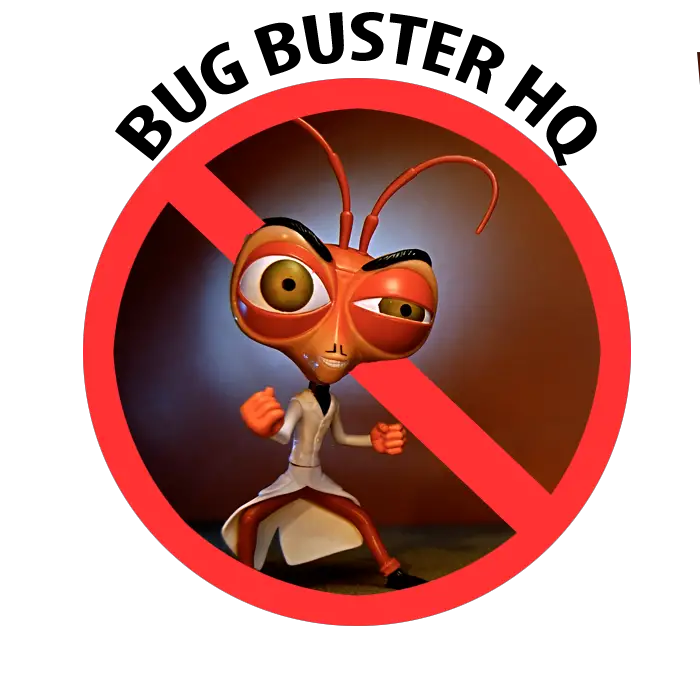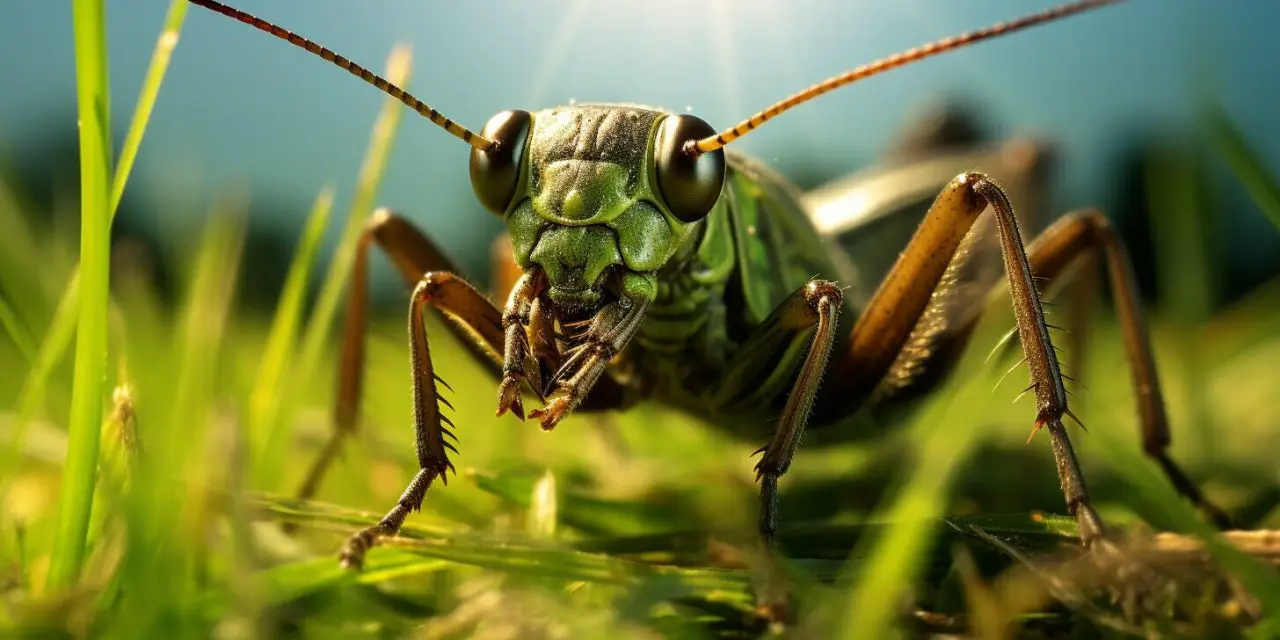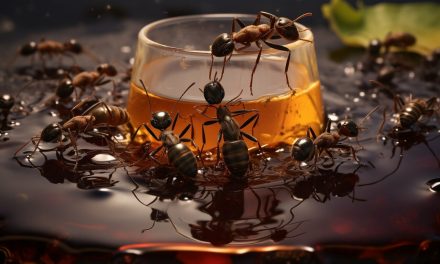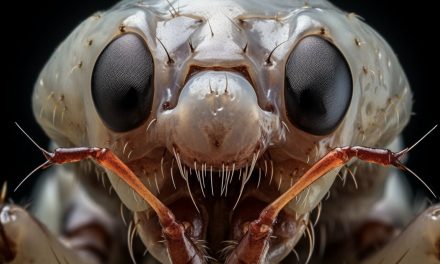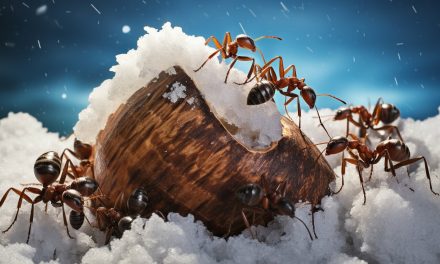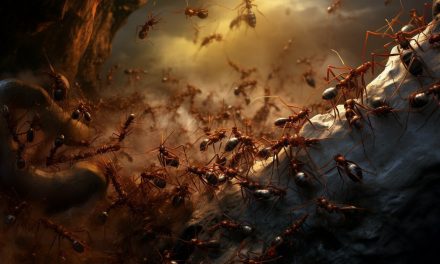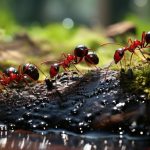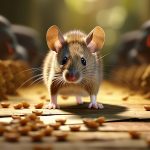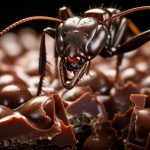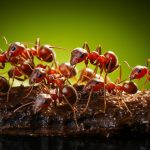This post may contain affiliate links.
If you’re curious about the eating habits of crickets, you may be wondering if crickets eat ants. As with any living creature, crickets have specific nutritional needs and dietary preferences. In this article, we will explore the cricket diet and examine whether crickets prey on ants.
Before we dive into the topic of crickets and ants, let’s take a look at the overall diet of crickets. These insects are omnivores, which means that they eat both plants and animals. In the wild, crickets consume a variety of foods, including leaves, fruits, seeds, other insects, and even small vertebrates like lizards and mice.
Key Takeaways:
- Crickets are omnivores and eat a variety of foods in the wild
- In this article, we will examine whether crickets eat ants
Understanding Cricket Nutrition
Cricket nutrition is a complex topic, as these insects are known to be omnivorous and will eat a wide variety of foods. In their natural habitat, crickets consume a range of plants, fungi, and other insects. Their diet can vary depending on factors such as climate, location, and food availability.
Research has shown that crickets require a balanced diet to maintain optimal health. They need protein for muscle development, carbohydrates for energy, and vitamins and minerals for overall health. In captivity, crickets are often fed a commercial diet that is specifically formulated to meet their nutritional needs.
Insect Eating Habits of Crickets
Crickets are best known for their habit of eating other insects, including ants. In fact, studies have shown that crickets can be important predators of ant colonies in certain ecosystems. They are known to feed on the eggs and larvae of ants, and may also consume adult ants if given the opportunity.
However, while crickets may view ants as potential prey, they are not solely reliant on them as a food source. In the wild, crickets will consume a wide range of other insects, including moths, caterpillars, and other small arthropods. Additionally, they will supplement their diet with plant matter.
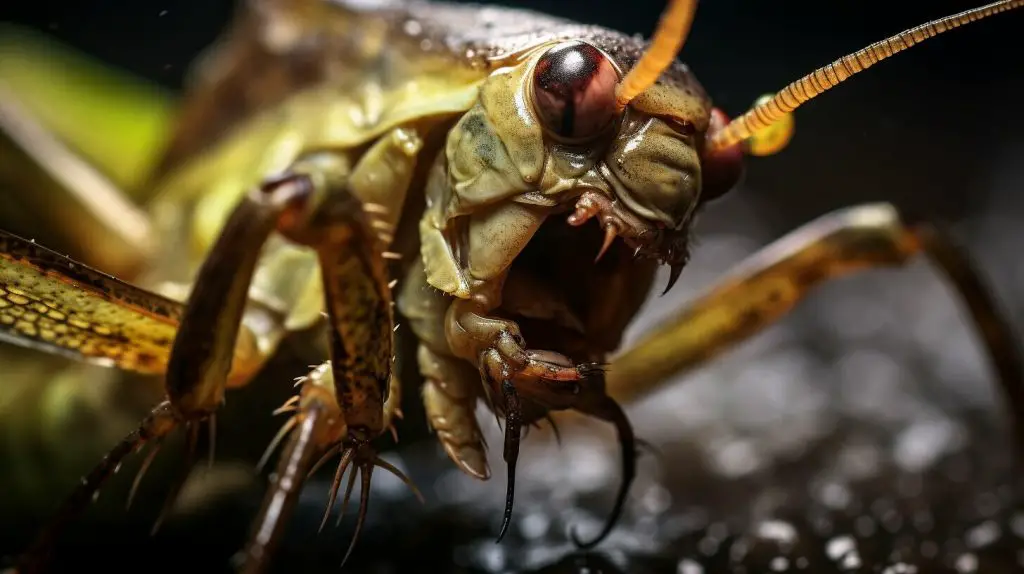
“Crickets are known to feed on the eggs and larvae of ants, and may also consume adult ants if given the opportunity.”
It is important to note that while crickets are known to eat ants, they are not the only insects that do so. Many other insect species, including beetles and spiders, will also feed on ants. Additionally, some ant species have developed defenses against these predators, such as producing toxic chemicals or swarming in large numbers to deter attackers.
Overall, understanding the nutritional needs and eating habits of crickets is an important part of caring for these insects in captivity. Providing a balanced diet that includes a variety of protein and plant sources is key to keeping crickets healthy and thriving.
Examining the Relationship Between Crickets and Ants
Ants and crickets are both common insects that can be found in a variety of environments. While they may coexist in the same habitat, the nature of their relationship is complex and multifaceted.
Some people may wonder if crickets view ants as potential prey. While crickets are known to be opportunistic and consume a variety of food sources, they do not exclusively prey on ants.
In fact, crickets and ants may have other interactions that are beneficial to both species. Ants are known to scavenge for food and can help remove waste materials from the environment. Crickets, on the other hand, can help control the population of other insects.
According to a study published in the journal Behavioural Processes, crickets were observed consuming ants in the wild. The researchers noted that the ants were consumed as part of a broader diet, rather than being specifically targeted as prey.
| Ants as Food for Crickets | Ants in the Diet of Crickets |
|---|---|
| Crickets consume ants as part of a broader diet of insects and other small animals. | Ants may be consumed incidentally or serve as a minor dietary component for crickets. |
 |
However, it is important to note that not all species of crickets consume ants in the same way. Some species may have different dietary preferences and may not consume ants at all.
In conclusion, while crickets may consume ants as part of their diet, they do not exclusively prey on them. Ants and crickets may have other interactions that are beneficial to both species, and the dietary preferences of crickets may vary based on their species and environment.
Ants as Food for Crickets
Ants are a common sight in the natural environment and are often consumed by various animals. But what about crickets? Do crickets eat ants as well?
Studies have shown that while crickets do consume ants, they are not their primary prey. Crickets tend to feed on a variety of foods, including plants, fruits, and other insects.
However, ants do play a role in the cricket diet. Ants are a rich source of protein and can provide essential nutrients that crickets need to survive. In fact, some cricket species rely on ants as a critical food source during their early development stages.
But while ants may be a nutritious food source for crickets, they are not always easy to catch. Ants have a reputation for being fast and agile, which makes them difficult prey for slower-moving crickets.
However, some cricket species have adapted to these challenges and have developed strategies for capturing ants. For example, some crickets have been observed hiding near ant trails and ambushing their unsuspecting prey.
So, to answer the question, “Do crickets eat ants?” the answer is yes, but not exclusively. While ants may be a valuable source of nutrition for crickets, they are just one part of a broader and diverse cricket diet.
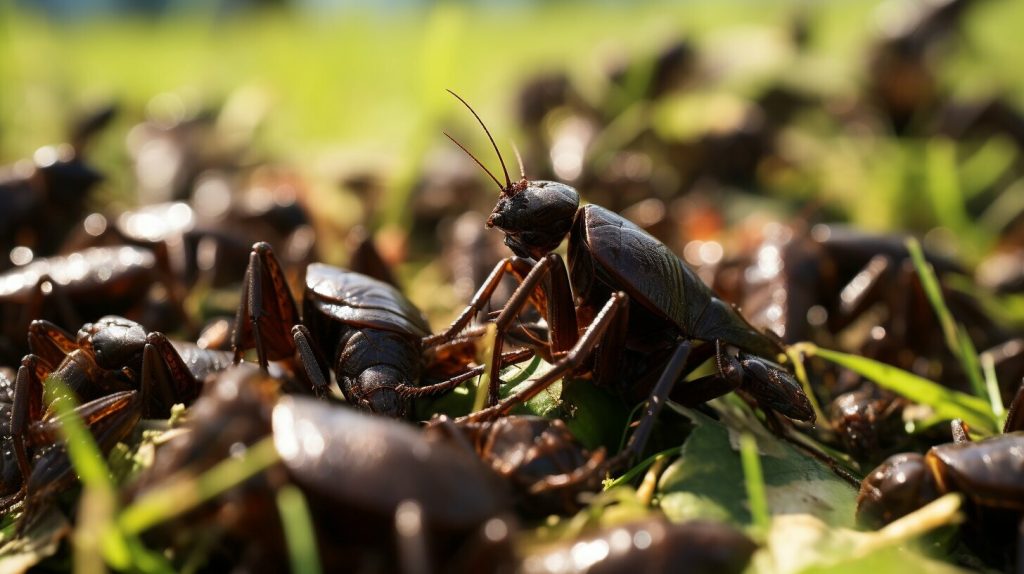
Ants in the Diet of Crickets
While crickets have a diverse diet, they are known to consume ants as well. However, ants are not their primary food source and are often consumed incidentally.
Research has suggested that ants may offer specific nutritional benefits to crickets, such as a source of calcium and protein. Ants also tend to be abundant in many environments, making them a convenient option for crickets to consume.
It is worth noting that the interaction between crickets and ants is complex and not always predatory. In some cases, crickets may even avoid ants if they perceive them to be a threat.
Overall, while crickets do eat ants, it is important to consider their broader diet and the various factors that may influence their feeding habits.
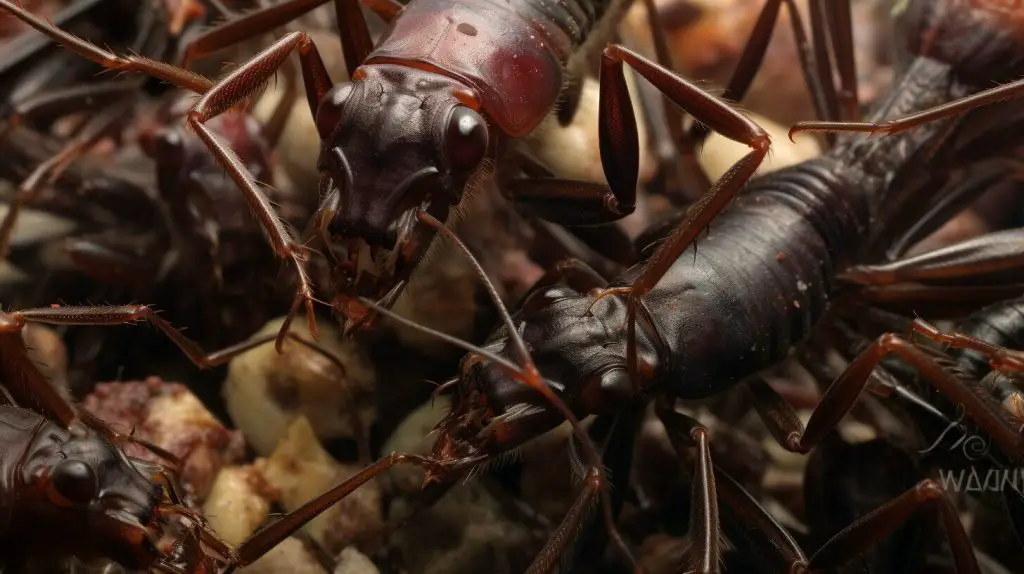
Ants as a Food Source for Crickets
Ants are a common presence in the environment and a potential food source for many insect species, including crickets. While crickets are generally omnivorous and consume a range of foods, including plants, fruits, and insects, the availability of ants in their diet may depend on various factors.
One study found that crickets actively consumed ants in the wild, with ants representing approximately 7% of their diet. However, the specific species of cricket and ant, as well as their geographic location, can influence the frequency of ant consumption. Additionally, other factors, such as the availability of alternative food sources and environmental conditions, may impact the inclusion of ants in cricket diets.
It is important to note that while ants may serve as a potential food source for crickets, they may not necessarily be a primary or essential component of their diet. Ants do offer some nutritional benefits, such as protein and amino acids, but these can also be obtained from other insect species commonly consumed by crickets.
Overall, the role of ants as a food source for crickets is complex and may vary depending on a range of factors. While crickets may actively consume ants in some situations, ants are not necessarily a staple food item for all cricket species.
If you are interested in learning more about the diverse and fascinating world of insect nutrition, resources such as the Smithsonian National Museum of Natural History’s Insect Nutrition exhibit offer a wealth of information and insight.
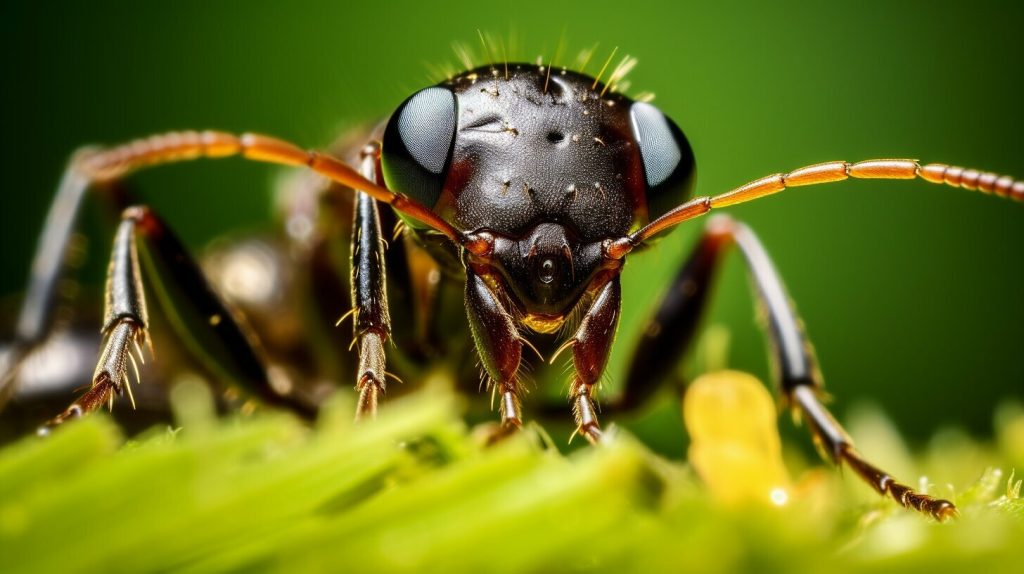
Investigating Ant Consumption by Crickets
If you’ve been wondering whether crickets eat ants, here’s what we’ve found. While the cricket diet does include insects, it’s not always clear whether ants are among their favored prey. However, there have been some cases and studies that suggest crickets do occasionally consume ants.
In one instance, a group of researchers observed crickets actively hunting and feeding on ants. The researchers noted that the crickets used their jumping ability to catch the ants, which were significantly smaller in size. This study provides some evidence that crickets do see ants as a potential food source.
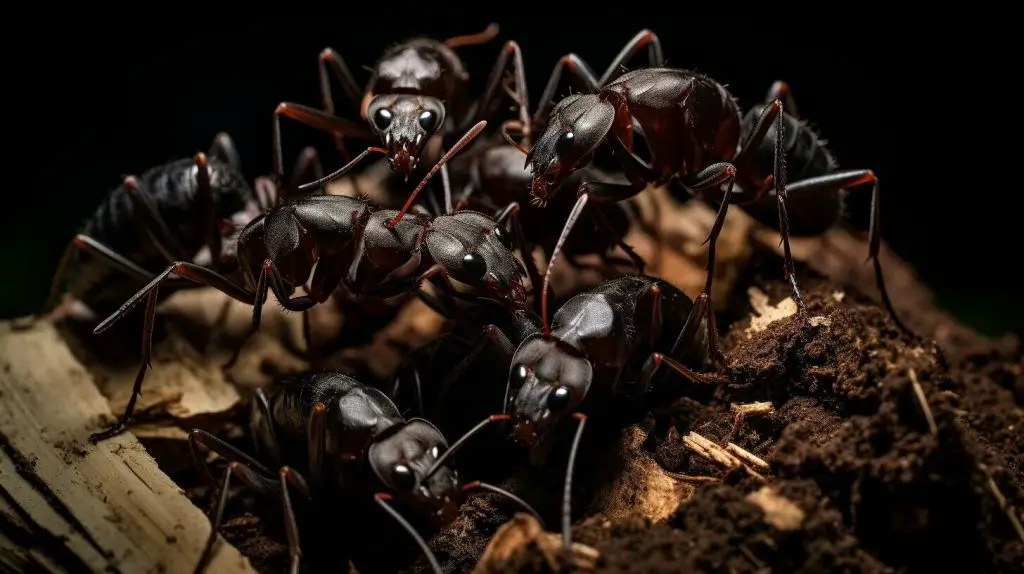
Another study found that crickets consumed ants only when other food sources were scarce. The researchers suggested that ants may not be the preferred meal for crickets but would do in situations where there was a lack of other options.
However, it’s worth noting that these studies are not conclusive, and more research needs to be done to understand the relationship between crickets and ants. At this point, it’s safe to say that crickets do eat ants, but it’s not a staple of their diet.
Other Factors Affecting Cricket Diet
While ants may be a potential food source for crickets, there are many other factors that can influence their dietary patterns. Environmental conditions, such as temperature and humidity, can impact the availability of food sources, forcing crickets to search for alternative options. Crickets may also choose to eat different foods depending on their life stage, with younger crickets requiring more protein than adults.
The size and species of both the cricket and the ant are also important factors to consider. Smaller crickets may struggle to catch and consume larger ants, while certain ant species may prove to be more challenging to eat than others. Additionally, crickets may vary their diet based on the time of day, with some species preferring to eat at night and others during the day.
Finally, it is worth noting that while crickets may view ants as potential prey, they are not strictly limited to consuming them. Crickets have a varied diet that includes a range of insects, plants, and other materials. The availability of these other food sources can influence how much or how often crickets consume ants.
Overall, while ants may play a role in the diet of crickets, they are just one of many factors that can affect their eating habits. Understanding the broader context of cricket nutrition is essential for gaining a deeper understanding of their dietary patterns and the role of ants within them.
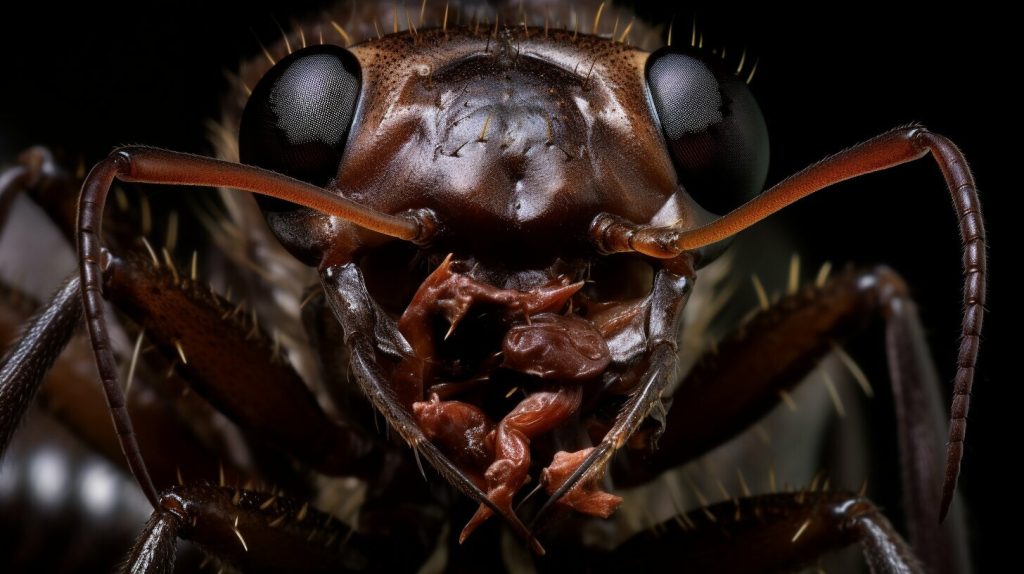
Conclusion: Uncovering the Truth
After exploring the fascinating world of cricket nutrition, it’s clear that these insects have a diverse and adaptable diet. While ants may be a part of their natural food sources, there is no concrete evidence that crickets actively prey on ants. Instead, ants are more likely to be consumed incidentally as part of a broader diet.
It’s important to note that environmental conditions, availability of alternative food sources, and the size and species of crickets and ants can all play a role in the cricket diet. Therefore, it’s essential to continue studying these insects and their eating habits to better understand their nutritional needs and ecological roles.
Overall, whether you’re a cricket enthusiast or simply curious about insect nutrition, there is a lot to discover about these fascinating creatures. Keep exploring and learning, and who knows what other secrets of the cricket diet you may uncover.
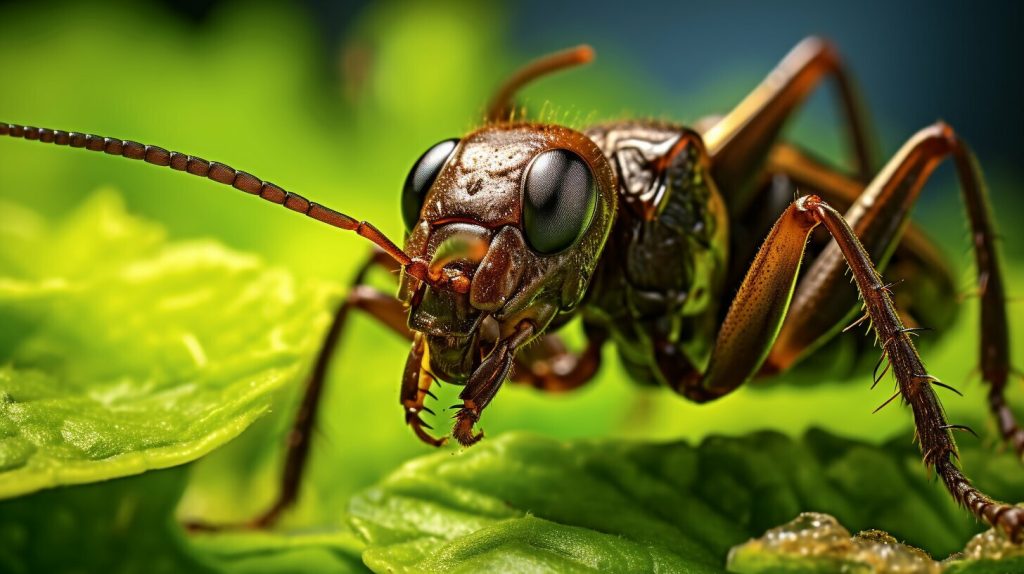
Dive into the Cricket Diet Now!
Congratulations! You have now learned all about the fascinating world of cricket nutrition and their potential relationship with ants. If you’re intrigued by this topic, we encourage you to continue your research and explore the diverse array of insects and their diets.
Interested in learning more about the cricket diet specifically? Consider checking out resources such as cricket farming guides, insect cookbooks, or scientific journals exploring insect nutrition.
Keep in mind that there is much we are still uncovering about the complexity of insect diets, so don’t be afraid to experiment and try new things. We hope you enjoyed this exploration into the world of cricket nutrition and look forward to hearing about your own adventures in insect cuisine.
What are Some Common Foods in the Diet of Frogs and Crickets?
Frogs and crickets have distinctive dietary preferences. To explore the diet of amphibians, it is crucial to understand that frogs mainly consume insects, including crickets. They rely on a wide variety of small invertebrates found in their habitat, such as spiders, beetles, and flies. Crickets, on the other hand, are omnivorous, feeding on plant matter, decaying organic material, and sometimes even smaller insects. The diet of these two fascinating creatures offers valuable insights into their ecological roles and food web dynamics.
Can Ants Smell Crickets and Other Predators?
Ants have a remarkable ability when it comes to detecting odors, and the ants smelling food truth revealed. Not only can they detect a wide variety of scents, but they can also pick up chemical signals from their environment. This sensory prowess enables ants to detect the presence of predators like crickets and other potential threats. Through their keen sense of smell, ants are able to stay one step ahead in the game of survival.
FAQ
Q: Do crickets eat ants?
A: Yes, crickets do eat ants. While ants may not be their primary food source, some species of crickets are known to prey on ants either incidentally or as part of their diet.
Q: What do crickets eat?
A: Crickets have a varied diet that includes plant matter, decaying organic material, other insects, and occasionally, smaller animals. They are opportunistic feeders and can adapt to different food sources.
Q: Are ants a primary food source for crickets?
A: Ants are not typically considered a primary food source for crickets. However, some species of crickets may actively prey on ants if they come across them, while others may consume ants incidentally as part of their broader diet.
Q: Do crickets benefit from eating ants?
A: It is unclear whether crickets derive specific nutritional benefits from consuming ants. While ants may provide some protein and other nutrients, crickets can obtain similar nutrients from other food sources as well.
Q: Are there any studies or evidence of crickets actively preying on ants?
A: There have been observations and studies documenting crickets consuming ants. However, the extent to which crickets actively prey on ants may vary depending on factors such as species, environment, and availability of alternative food sources.
Q: What factors influence the cricket diet?
A: The cricket diet can be influenced by environmental conditions, availability of alternative food sources, and the size and species of both crickets and ants. These factors can impact the likelihood of crickets consuming ants as prey.
